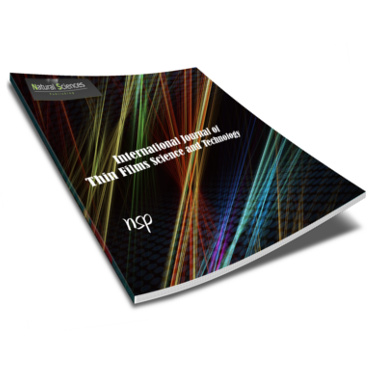International Journal of Thin Film Science and Technology

Abstract
Objectives: Diabetic foot is a serious complication of diabetes which aggravates the patient’s condition whilst also having significant socioeconomic impact. to examine the effectiveness of pulsed radio frequency in the treatment of chronic lower limb ulcers. Materials and Methods: Forty patients with persistent diabetic foot ulcers for more than three months participated in the study. Their ages ranged from 40 to 50 years. Patients were chosen from Deraya University Physical Therapy Center between July 2019 and February 2020. Patients were randomly assigned to one of two groups: Group (A): The Pulsed Radio Frequency Group received PRFE with a maximal power 400 Watts, a pulse width of 400 microseconds, a frequency of 144 pulses per second, and an average power of 23 watts for 30 minutes, three times a week for six weeks, as well as medical treatment. Only medical treatment was provided to Group (B) (Medical Treatment Group). Ki-67 percent was used to measure cell proliferation before and after treatment. Results: the Wilcoxon sum ranking test revealed that there was a significant increase in Ki-67% after 6 weeks of treatment application in group A when compared with corresponding pre-treatment value where P-value = 0.00008. While there was no significant difference between pretreatment and posttreatment data in group B regarding the Ki-67% where P-value = 0.496. Mann-Whitney test revealed that there was no statistically significant difference between groups regarding the pretreatment data where P-value = 0.562. While there was a statistically significant difference between groups regarding posttreatment data where P-value less than 0.00001. Conclusion: Pulsed radio frequency energy accelerates wound healing and increases cell proliferation, making it an important adjuvant therapy for chronic lower limb ulcers.
Recommended Citation
Ezz Eldeen Abd El hameed, Raafat; Mohamed Kamel, Roshdy; Abd El Ghany Mohamed, Said; Ahmed Elbedewy, Mohamed; and Aref Ahmed Hussein, Ahmed
(2022)
"Ki-67% Response to Pulsed Radio Frequency Energy on Chronic Wound Healing in Patients with Diabetic Foot Ulcer,"
International Journal of Thin Film Science and Technology: Vol. 11
:
Iss.
4
, PP -.
Available at:
https://digitalcommons.aaru.edu.jo/ijtfst/vol11/iss4/1

